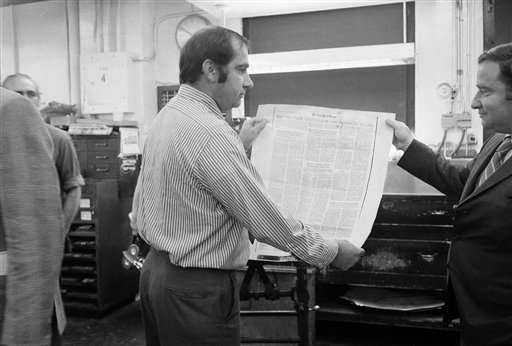Prior restraint is a form of censorship that allows the government to review the content of printed materials and prevent their publication.
Most scholars believe that the First Amendment’s guarantee of freedom of the press includes the restriction of prior restraints. In numerous cases, the Supreme Court has indicated that the Constitution establishes a strong presumption against such prior restraints.
The founding fathers viewed the practice of prior restraint as detrimental to democracy. British common law had been interpreted to oppose licensing and other forms of prior restraint of speech and press, which served as an example during the U.S. Constitutional Convention.
As literacy rates increased and the number of newspaper publications expanded, several court cases challenged government officials who were accused of abridging the free press rights of newspaper publishers.
Supreme Court affirms government cannot censor the press in Near v. Minnesota
In Near v. Minnesota (1931), the U.S. Supreme Court struck down the Minnesota Public Nuisance Abatement Law that barred the publication of malicious or defamatory materials.
County prosecutor Floyd Olson, who later became governor of Minnesota, had convinced a county judge in 1927 to issue a gag order against journalists Jay Near and Howard Guilford under the Minnesota law. The two journalists had written several contentious articles in the publication Saturday Press accusing Olson and other local politicians of colluding with gangsters.
Near appealed the case and ultimately won in a 5-4 decision in which the Supreme Court ruled that the Minnesota law violated the First Amendment. The case is significant for two reasons.
- First, it established a judicial precedent for the no prior restraint doctrine.
- Second, it reinforced the incremental application, or incorporation, of the Bill of Rights to the states.
Pentagon Papers case affirms “no prior restraint” and free press role in democracy
Although Near v. Minnesota reaffirmed that governmental censorship of media publications is unconstitutional, the ruling still left questions.
For instance, did the First Amendment apply to situations in which a newspaper or magazine publication could potentially threaten national security by divulging sensitive military information? This became an issue of concern after secret government documents began appearing in the New York Times in June of 1971, and later in the Washington Post.
Known as the Pentagon Papers, these documents, which contained classified and top secret information related to American policies and activities in the ongoing Vietnam War, were copied from the State Department and Department of Defense by Daniel Ellsberg.
The federal government responded immediately by filing a legal suit against the two newspapers, citing national security as the primary reason for preventing publication of the material. The New York Times contended this violated its First Amendment rights.
In a 6-3 decision, the Supreme Court ruled in New York Times Co. v. United States (1971) that despite the sensitive nature of the information, the newspapers could still publish it under the no prior restraint doctrine. Free expression outweighed the potential harm that could have resulted from publishing the story. The decision reinforced the media’s role, under the First Amendment, to serve as a watchdog and publish information, even critical or embarrassing reports about government officials and their actions.

The advancement of technological media has required new interpretations of the law for areas outside of the print media, such as film, radio and television, and, most recently, the Internet. The Supreme Court’s striking down parts of the Communications Decency Act of 1996 in Reno v. American Civil Liberties Union (1997) reaffirmed the judiciary’s commitment to protecting First Amendment publication rights. The Court ruled that even in situations where questionable Internet content may potentially be harmful to children, who thus could legally be prohibited access, this standard cannot be extended universally to include adults. In this photo, ACLU Senior Staff Counsel Chris Hansen, left, ACLU of Pennsylvania Legal Director Stefan Presser, center, and Kiyoshi Kuromiya, founder of the Critical Path AIDS Project, hold a news conference in Philadelphia, Thursday, Feb. 8, 1996, to discuss a lawsuit against the Communications Decency Act of 1996 which bans indecent speech on computer networks. (AP Photo/Nanine Hartzenbusch, used with permission from the Associated Press)
Publishers can still be prosecuted or sued for what they print
Although the First Amendment prohibits prior restraint, it does not protect publishers from prosecutions consequent on the content of their materials. Nor is the protection from prior restraint absolute; compelling circumstances must be taken into account.
The advancement of technological media has required new interpretations of the law for areas outside of the print media, such as film, radio and television, and, most recently, the Internet.
The Supreme Court’s striking down parts of the Communications Decency Act of 1996 in Reno v. American Civil Liberties Union (1997) reaffirmed the judiciary’s commitment to protecting First Amendment publication rights. The Court ruled that even in situations where questionable Internet content may potentially be harmful to children, who thus could legally be prohibited access, this standard cannot be extended universally to include adults.
With the Court placing the burden of censorship on parents, the Internet remains the most recent example of a new technology that is free to function, for the most part, unregulated.
This article was originally published in 2009. Daniel Baracskay teaches in the public administration program at Valdosta State University.

